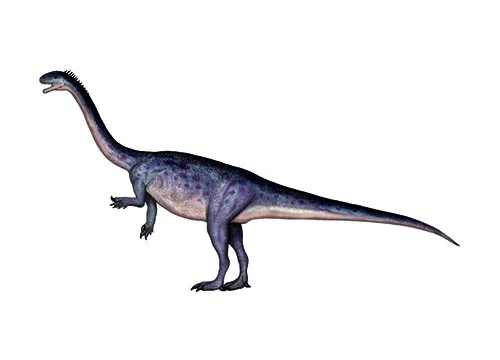Jiangshanosaurus (Jiangshan lizard)

Je-ang-shan-o-sore-us
F. Tang, X.-M. Kang, Z.-S. Jin, F. Wei & W.-T. Wu - 2001
Herbivore
Estimated 5 meters long
Sauropod
J. lixianensis (type)
China, Zhejiang Province - Jinhua Formation
Late Jurassic, 160 million years ago
Jiangshanosaurus Facts
Jiangshanosaurus, meaning “Jiangshan lizard,” is a genus of herbivorous dinosaur that lived in what is now China during the Late Jurassic period, about 160 million years ago. The dinosaur was named after the Jiangshan County in the Zhejiang province of China, where its fossils were discovered in 2000.
Jiangshanosaurus was a relatively small stegosaur, estimated to have been about 5 meters (16 feet) long and weighing around 800 kilograms (0.9 short tons). It had a row of large bony plates on its back, which may have served as a form of protection from predators or as a means of regulating its body temperature. It also had spikes on its tail, which could have been used in defense or for display purposes.
Jiangshanosaurus was part of a group of dinosaurs known as stegosaurs, which were characterized by their distinctive body armor and spike-tipped tails. These dinosaurs were herbivores and likely fed on low-lying vegetation such as ferns and cycads. They were also quadrupedal and had relatively small brains for their size, suggesting that they were not particularly intelligent animals.
The discovery of Jiangshanosaurus has helped paleontologists better understand the evolution and diversity of stegosaurs during the Late Jurassic period. The dinosaur is particularly important because it represents a transitional form between early stegosaurs, such as Huayangosaurus, and later forms, such as Stegosaurus. Its discovery has shed light on the complex patterns of evolution and diversification that occurred in these fascinating animals during the Mesozoic Era.
Jiangshanosaurus is known from a partial skeleton, including the skull, some vertebrae, ribs, and limb bones. These fossils were found in marine sediments, suggesting that the dinosaur may have been washed out to sea after it died. Despite the incompleteness of the fossil material, paleontologists have been able to learn a great deal about this interesting dinosaur and its place in the history of life on Earth.



